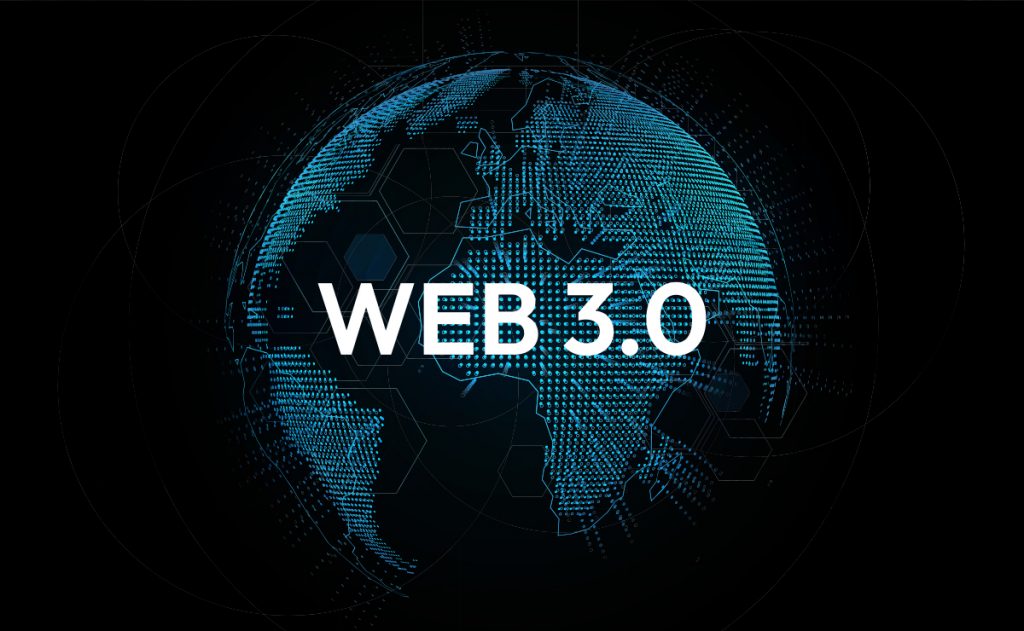Web 3.0 : The future of Fintech Under Web3.0
The question you probably have is, “What is Web 3.0 technology?” Here’s an explanation of “definition Web 3.0”
Web 3.0 Definition
Web 3.0 is also referred to as Internet 3.0, and it normally refers to the third generation of Internet technology, a technology that enhances interaction between devices and users. This intelligence also exists in interactions between software, not simply between users and websites. There is also more than that. Numerous factors contribute to the differences between Web 2.0 and Web 3.0.

Web 3.0: Key features
- Web 3.0 is open and available everywhere. Openness is one of the fundamental characteristics of the internet of the next generation, which is powered by blockchain. Transparency and security are ensured by public blockchains.
- Web 3.0 is unrestricted. The usage of the blockchain reduces the need for external authorizations for data transfers. Users can interact easily with each other without restrictions.
- Web 3.0 is trust less. The data stored on the blockchain is unchangeable and censorship-proof. Smart contracts and other applicable protocols store the rules for transaction execution. Additionally, users are not required to submit their network-related actions to any centralised authorities. As a result, it will provide greater transaction security and reduce the likelihood of rules being implemented in a biased manner.
Web 3.0 technology in fintech
What about the challenges for the fintech industry in the new digital era?
Without challenges, there would be no opportunity to evolve. In order for fintech companies to succeed in Web 3.0, they need to overcome the following obstacles:
‘The new technologies have many benefits, but they also pose some challenges.
- Firstly, it is still early days for Decentralized Finance. In other words, there are still some bugs and glitches that need to be fixed.
- Secondly, In blockchain technology, there is a constant evolution. Therefore, financial systems and platforms can change quickly, unexpectedly affecting businesses and entrepreneurs.
- Thirdly, Decentralised Finance is a global system, and therefore it is not subject to the same rules and regulations as the traditional financial system. In the conventional financial system, banks are required to follow KYC (know your customer) and AML (anti-money laundering) regulations. It is important to emphasise, however, that these regulations do not necessarily apply in the DeFi system, according to the founder of CAPEX.com.
Benefits of Web 3.0 for the FinTech world:
Our decentralized operating model and Web 3.0 are closely aligned, resulting in the following top benefits:
- Trustworthiness Web 3.0 will provide users simpler and more user-friendly onboarding process. As a result of Web 3.0’s use of decentralized networks, end-users will have complete ownership and control over their online information and services
- Accessibility A major advantage of Web 3.0 is that the user will have access to information from anywhere.
- Better Improved Customer Journey A better understanding of customer needs and expectations will be possible through Web 3.0 for FinTech organizations
- Easy and Faster Transactions FinTech companies across the world will benefit from real-time, secure, and transparent transactions facilitated by artificial intelligence, IoT, and blockchain technology. Powered by automation and secured peer-to-peer transactions, Web 3.0 will enable businesses to boost their efficiency for digital payments and digital lending.
- Security As data is stored on distributed nodes as a result of decentralization, Web 3.0 will dramatically reduce the suspensions and denials of distributed services. As a result, FinTech organizations will be able to reduce the cost of managing seizures or server failures.
Top Web 3.0 applications in 2022
- Wolfram Alpha Wolfram Alpha is one of the top Web 3.0 applications in 2022 as a product from Wolfram Research .It is a computational knowledge engine and answer engine developed by Wolfram Research. It answers factual queries directly by computing the answer from externally sourced data.
- Siri The semantic internet is also used in Apple’s Siri. Using voice recognition software, it creates a technological wave .Voice recognition software is considered to be a key element of Web 3.0.
- Meta is one of the top social media network as well as Web 3.0 applications. It has been continuously inviting people to create new societies on Web 3.0. It to boost customer interaction as well as customer engagement on the social media platform.
- 3D graphics Among the top Web 3.0 applications is 3D graphics, which is used extensively and rapidly on a wide range of websites and services.
Combining 3D graphics with augmented reality/virtual reality technologies produces immersive results related to various real-life environments, places, and objects.
Conclusion:
Today, businesses worldwide are in desperate need of digital lending technology partners as FinTech matures rapidly. Using Web 3.0 to unleash innovation, next-generation businesses need a trusted partner who knows the state of FinTech market.
To differentiate your business in this highly completive world partnerships like these facilitate an adequate opportunity .


